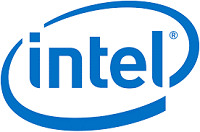 High-Performance Computing (HPC) has gone mainstream and forever changed the world of engineering and design. The adoption of HPC systems with Computer-Aided Engineering (CAE) software for high-fidelity modeling and simulation is on the rise among the automotive, aerospace, discrete manufacturing, and healthcare robotics industries, to name a few. [1]
High-Performance Computing (HPC) has gone mainstream and forever changed the world of engineering and design. The adoption of HPC systems with Computer-Aided Engineering (CAE) software for high-fidelity modeling and simulation is on the rise among the automotive, aerospace, discrete manufacturing, and healthcare robotics industries, to name a few. [1]

In addition, there is a convergence of HPC-powered CAE and Artificial Intelligence (AI) in a symbiotic relationship where simulations generate tons of data and AI models apply data analytics iteratively for even higher quality simulations. This integration of CAE and AI accelerates product development and improves quality, but requires scalability at every level to address this big data and big compute challenge, and mandates a High-Performance infrastructure.
The global Manufacturing Analytics software market is projected to reach $19.47 billion by and the AI technologies market for Manufacturing is growing at a vigorous 40% clip to $16 billion by . We see the future of HPC in manufacturing evolving to multidisciplinary, iterative modeling of complex systems with new AI use cases requiring HPC technology. According to MarketWatch, HPC-based AI revenues are expected to grow 29.5% annually as more companies integrate AI to innovate their operations for improved productivity.
Today, manufacturing IT systems must analyze vast amounts of complex datasets, as well as power 3D modeling and simulations to optimize the entire process from design to production to operations. HPC – on-premises or in the cloud – is now a pervasive, integral part of most engineering operations especially as engineers apply multiphysics simulations to address growing design complexities. Manufacturers and their suppliers can now reap the quintessential benefits of the next industrial revolution to design, simulate, and optimize products and processes to lower cost, reduce risk, and outflank competitors. Based on a Hyperion Research Study, for each $1 invested in HPC in Manufacturing, $83 in revenue is generated with $20 of profit [2].
Lenovo believes that manufacturers of all sizes can extract powerful insights from their data using HPC. In 2019, Lenovo announced an effort dubbed “From Exascale to Everyscale™” to use Exascale level HPC technologies and innovation to help customers, including manufacturers, to access and leverage HPC irrespective of size.
Further, Lenovo has teamed with Intel to help enterprise customers generate fast, efficient insights by adopting HPC innovation and exascale technology, without cratering budgets. Together, we deliver an optimized architecture that drives increasing levels of performance, density, and efficiency within the HPC domain. Additionally, Lenovo has teamed with industry’s leading ISV software vendors, including ANSYS, Dassault Systems, Siemens, Nastran, Altair and others to perform Finite Element Analysis (FEA), Computational Fluid Dynamics (CFD), Multibody Dynamics (MBD), and more.
Lenovo has several manufacturing customers who have adopted HPC to gain insights faster. A good example is the Italian racecar manufacturer, Dallara Automobili Spa. With demand for CFD and FEA increasing, Dallara decided to invest in an HPC infrastructure (a powerful new supercomputer from Lenovo [3]) that it could use to accelerate compute-intensive CFD and computer-aided design and engineering workloads. “The Lenovo Professional Services team helped us install and configure the systems to meet our specific requirements,” said Fabrizio Arbucci, ICT Manager at Dallara. “We can also now run several simulations simultaneously, so different teams and departments don’t need to wait to run their analyses.”
Another customer example is Vestas, a global leader in wind energy that not only just manufactures industry-leading wind turbines. To help customers get the most out of their investment in wind turbines, Vestas deployed a cluster based on 662 Lenovo NeXtScale nx360 M5 compute nodes – the largest HPC cluster in Denmark to support game-changing big data analytics. Powered by CPUs from the Intel® Xeon® E5 family of processors, this Lenovo system offers the high levels of performance needed to run resource-intensive data analysis, modeling and simulation tasks.
Today, Vestas can analyze streaming data from over 35,000 turbines around the world – delivering actionable insight to improve manufacturing, assembly, maintenance and customer services
Although, there are a myriad of product configurations applicable to manufacturing, based on extensive testing of various manufacturing application scenarios, Lenovo offers the “ThinkSystem SR630 – 2-socket 1U rack server”to fit most scenarios. Additonally, Lenovo can provide a completely integrated HPC solution: tested, racked and shipped for guaranteed interoperability, improved performance and lower overall acquisition costs. (www.lenvco.com/data-center).

If you are looking to adopt HPC, the combination of Lenovo and Intel is the right choice, especially as you face competitive and cost pressures to bring high-quality products faster to market. Lenovo’s vast enterprise HPC experience can help you invest wisely in your CAE solutions, to drastically reduce production times, optimize designs, and enhance productivity with better IT and business outcomes.
[1] High Performance Computing (HPC) Market, growth, trends, forecasts (2020 – 2025). Mordor Intelligence. Report posted at https://www.mordorintelligence.com/industry-reports/high-performance-computing-market
[2] Hyperion Research Update. Supercomputing 2019. Earl Joseph, Steve Conway, Bob Sorensen and Alex Norton. Posted at www.hyperionresearch.com. Nov 2019.
[3] Lenovo Case Study – Dallara Automobili Spa. Post on WWW at https://lenovosuccess.com/reference/928/dallara-automobili-spa




